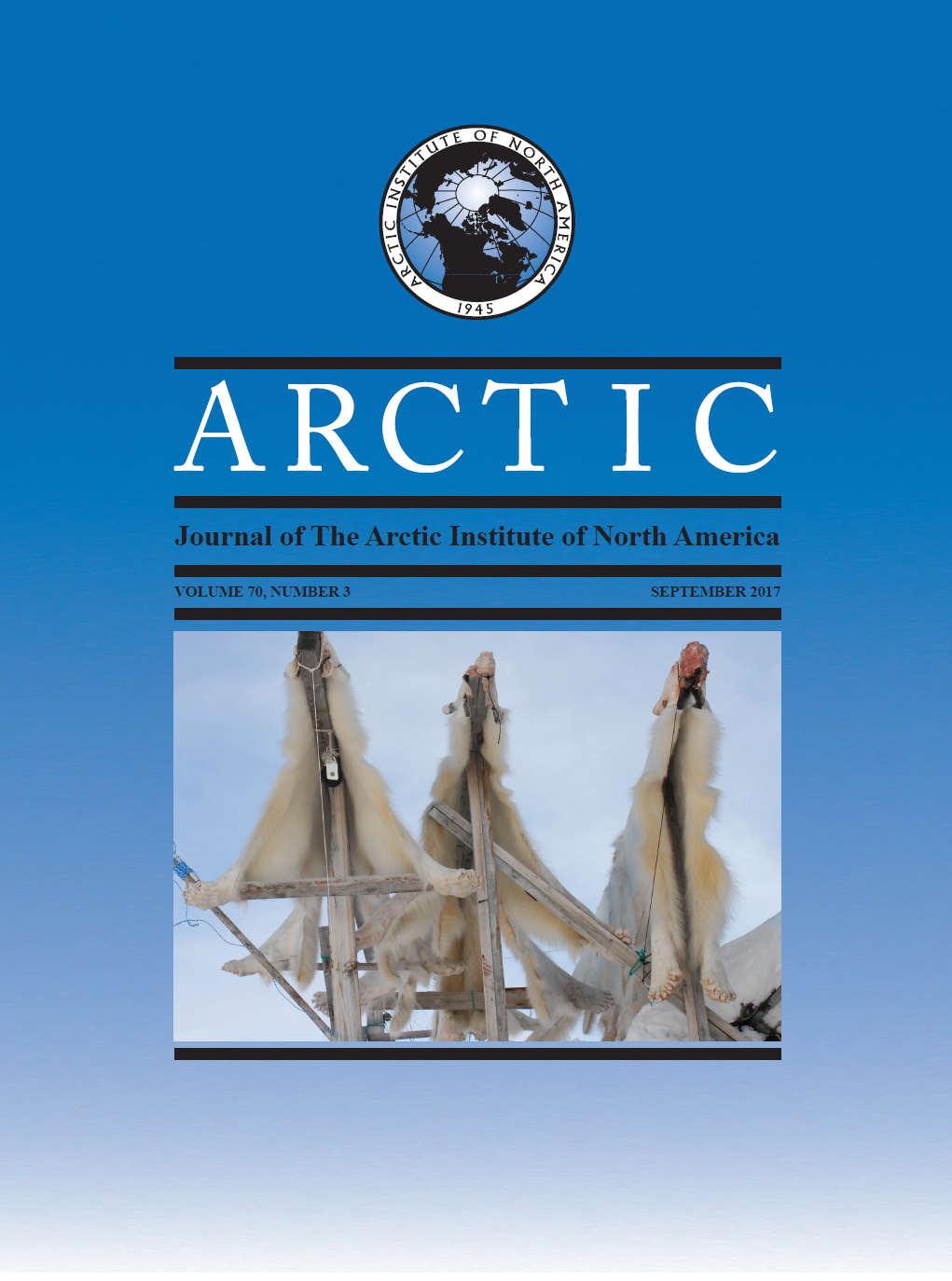Evaluating Evidence for Historical Anadromous Salmon Runs in Eklutna Lake, Alaska
DOI :
https://doi.org/10.14430/arctic4665Mots-clés :
saumon, saumon rouge, poisson anadrome, restes de poisson de mer, centre-sud de l’Alaska, lac Eklutna, sédiments lacustres, isotopes d’azoteRésumé
Nous avons évalué la présence historique du saumon rouge dans le lac Eklutna, en Alaska, avant la construction d’un barrage de dérivation sur la rivière Eklutna en aval en 1929, à l’aide d’isotopes stables de l’azote mesurés dans un noyau lacustre de 93 cm de longueur. Les sédiments du noyau ont été datés au moyen du dénombrement des varves et vérifiés avec les mesures du plomb 210 et du césium 137. La date de base du noyau était de 1859 A.D., et les varves devenaient un peu plus minces et moins distinctes après 1929. Les sédiments étaient principalement clastiques, leur teneur en carbone étant inférieure à 1 %. Les valeurs des isotopes d’azote étaient généralement faibles et stables dans l’ensemble du noyau, variant ainsi entre 1,5 ‰ et 2,5 ‰. Il n’existe pas de preuve statistique de changement de composition isotopique après l’aménagement du barrage. À la lumière de la preuve publiée à partir de l’histoire orale, des dossiers culturels et des relations avec l’habitat qui suggèrent que le saumon rouge aurait pu être présent dans le lac avant 1929, nous avons réalisé un simple test de sensibilité afin d’évaluer la possibilité qu’une petite montaison de saumon n’ait pas été détectée au moyen de notre technique. Nous avons constaté qu’une montaison pouvant atteindre 1 000 saumons par année, voire 15 000 par année, serait possible sans pour autant altérer considérablement la composition isotopique mesurée des sédiments du lac Eklutna. Nos résultats ne fournissent aucune preuve de telles montaisons, sans toutefois exclure l’existence possible d’une pêche relativement petite de saumon rouge dans le lac Eklutna avant 1929.


